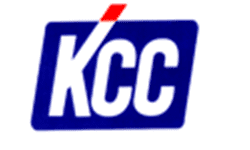High Altitude Long Endurance (Pseudo Satellite) Market
Growing adoption from the military and telecommunication industry to expand High Altitude Long Endurance (Pseudo Satellite) Market through 2020-2026
HALE is an aircraft
vehicle that can perform large-scale surveys of geographic areas with high accuracy
and provide real-time information on military, defense, surveillance, and other
civilian tasks. The High Altitude Pseudo-Satellite (HAPS) can be considered an
extended version of HALE. HAPS is designed to operate at very high altitudes.
Although installed at 30,000 feet above the Earth, HALE can reach up to 65,000
feet above the Earth's surface. In addition to the capability of directly
replacing a satellite, HALE and HAPS can be modified several times for
requirements, which is not at all possible with geosynchronous satellites,
thereby driving the High Altitude Long Endurance (Pseudo Satellite) Market growth in the
years to come.
Furthermore, in order to control the
function of the geostationary satellite, the operator must, in this case, be
aware of an energy source consisting mainly of fuel gas. These fuel gases also
increase the cost of satellite maintenance. HALE and HAPS, on the other hand,
operate on very low-cost solar energy and lithium-ion batteries compared to
fuel gas. Therefore, aerospace and defense, military, surveillance, or
communications applications have begun to adopt HALE and are now adopting HAPS
to increase operational efficiency. Such cost-saving benefits offered by HALE
and HAPS are projected to boost the High Altitude Long Endurance (Pseudo
Satellite) Market outlook.
Request
a sample report from https://www.reporthive.com/request_sample/2186020
HAPS is a potential alternative to
traditional satellites, and once deployed, these aerial platforms typically
travel to stratospheric altitudes ranging from 10 to 30 miles above sea level.
Because HAPS is stationary, its effectiveness in providing services is limited,
which might somewhat hinder the High Altitude Long Endurance (Pseudo Satellite)
Market demand, but the low-cost benefits should subdue these negative effects
in the upcoming future. Deploying satellites not only cost extreme, but also
come with capacity and performance limitations. Replacing satellites with HAPS
thus helps in efficiently delivering voice, video and broadband services at a
much more economical price-to-performance margin than traditional geostationary
satellites. Therefore, they are increasingly being adopted by
telecommunications service providers to meet the demand for high-capacity
wireless services, especially in remote areas where terrestrial-based network
coverage is limited.
HAPS is more economical to manufacture and
operate, but its effectiveness is limited by the durability of such platforms.
For HAPS platforms, such as unmanned aerial vehicles (UAVs), electric
propulsion systems are integrated to increase platform durability. This will
result in a significant investment in R & D to develop a powerful battery
system and high charge density solar panels to make the HAPS platform more
durable, further promoting adoption by telecom and emergency service provider
end-users. Hence the ongoing technological advancements to reduce the
operational challenges are presumed to stimulate the High Altitude Long
Endurance (Pseudo Satellite) Market trends in the next few years.
Author Name : Report Hive Research

.png)

.png)



















